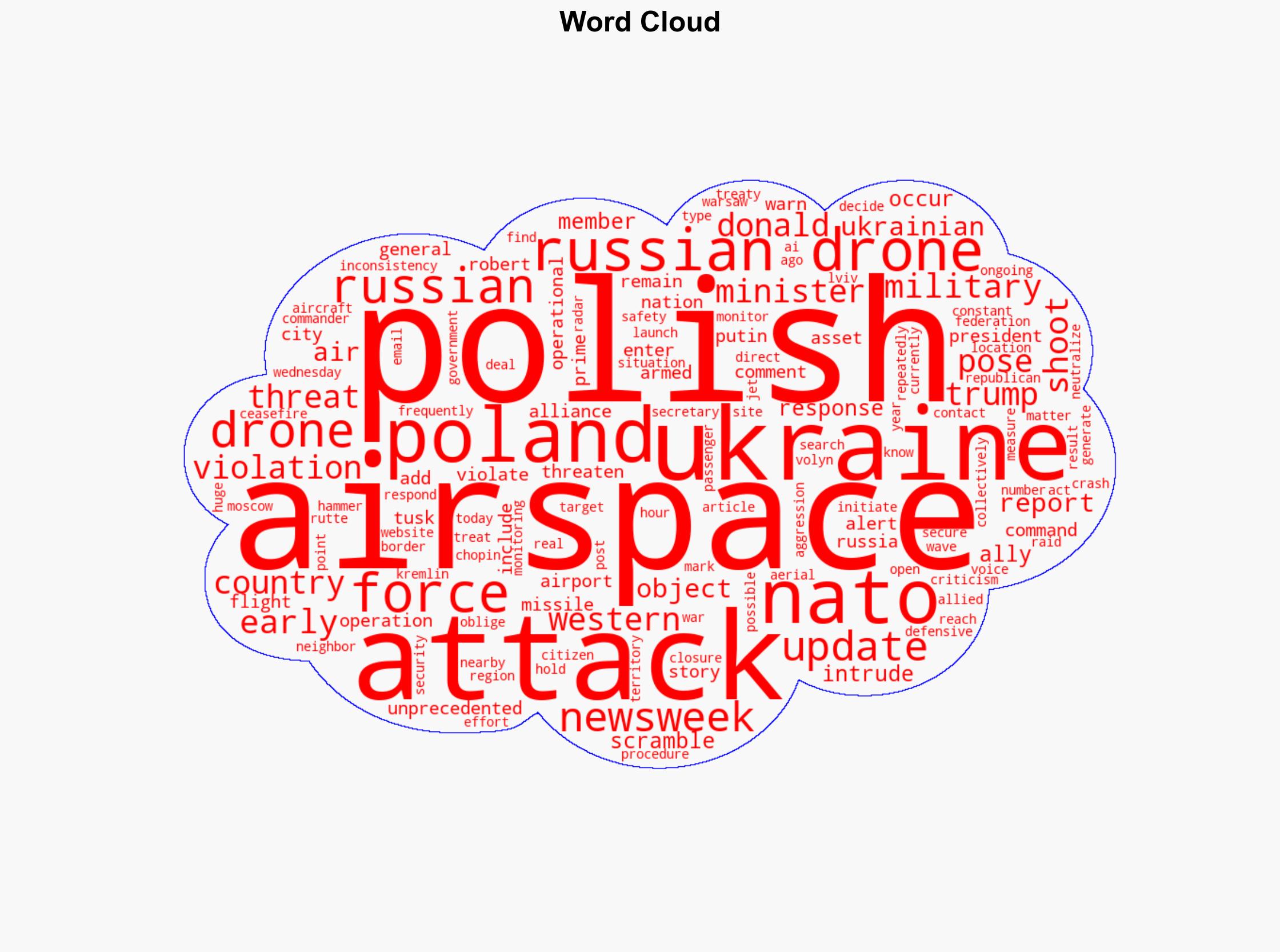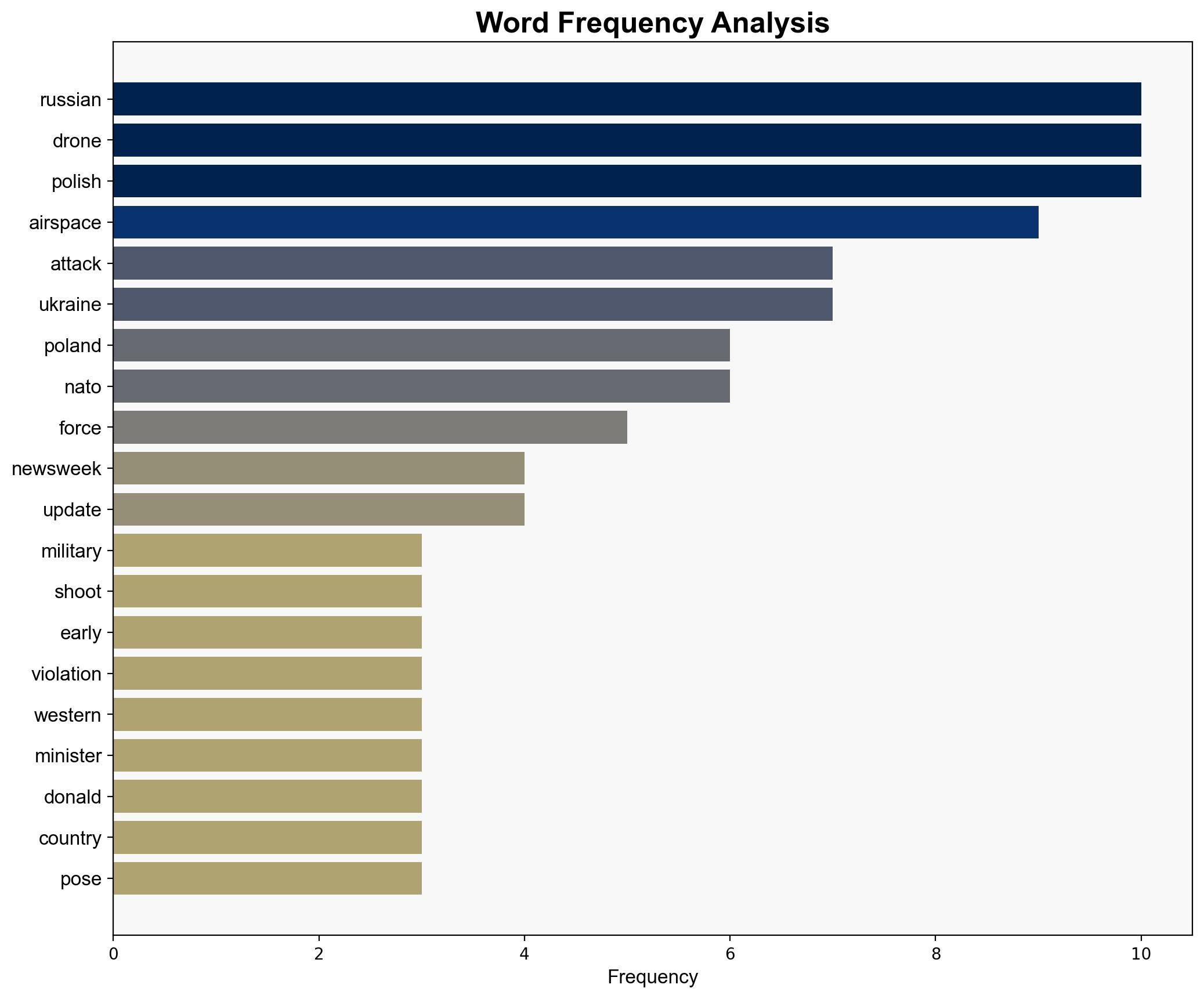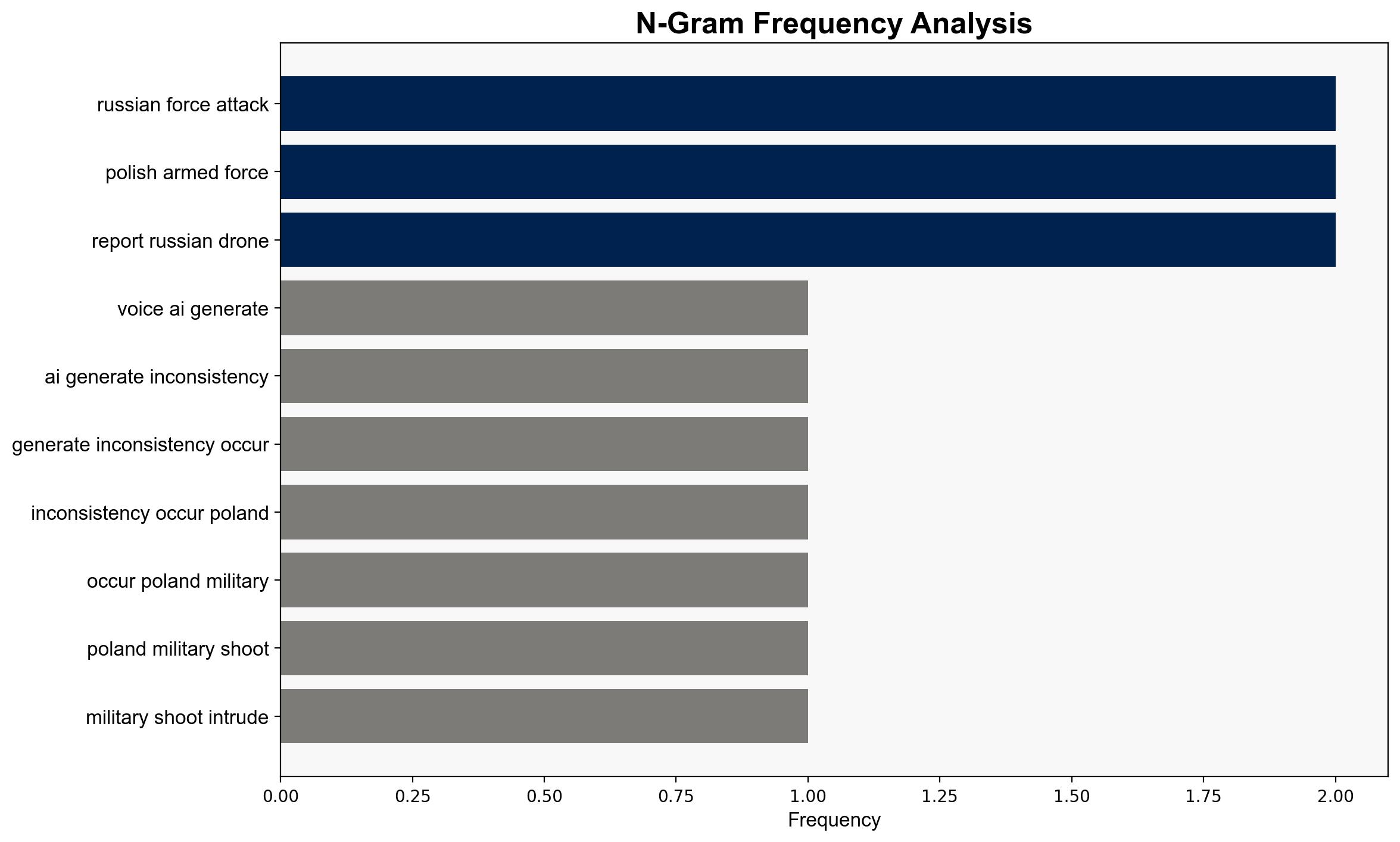NATO Ally Scrambles Jets as Russia Launches New Attack – Newsweek
Published on: 2025-09-10
Intelligence Report: NATO Ally Scrambles Jets as Russia Launches New Attack – Newsweek
1. BLUF (Bottom Line Up Front)
The most supported hypothesis suggests that the Russian incursion into Polish airspace was a deliberate test of NATO’s response mechanisms. Confidence in this assessment is moderate due to limited corroborative evidence. It is recommended that NATO enhances its aerial surveillance and readiness posture in Eastern Europe to deter further provocations.
2. Competing Hypotheses
Hypothesis 1: The Russian drones entering Polish airspace were a deliberate provocation to test NATO’s response and resolve. This hypothesis is supported by the pattern of Russian military behavior in the region and the strategic significance of probing NATO defenses.
Hypothesis 2: The incursion was an unintended consequence of Russian operations in Ukraine, with drones accidentally straying into Polish airspace due to navigational errors or technical malfunctions. This hypothesis considers the complexity of military operations and potential for human or technical error.
3. Key Assumptions and Red Flags
– **Assumptions for Hypothesis 1:** Russia has strategic intent to test NATO’s defenses; incursions are part of a broader pattern of aggression.
– **Assumptions for Hypothesis 2:** Russian military operations are prone to technical errors; there is no strategic intent behind the incursion.
– **Red Flags:** Lack of direct evidence linking Russian command to deliberate incursion; potential bias in interpreting Russian actions as inherently aggressive.
– **Inconsistent Data:** Reports of the incursion vary, with some suggesting deliberate action and others indicating accidental entry.
4. Implications and Strategic Risks
– **Escalation Risk:** Continued incursions could lead to military confrontation if NATO responds with force.
– **Geopolitical Impact:** Increased tensions between NATO and Russia could destabilize Eastern Europe and strain diplomatic relations.
– **Economic Consequences:** Heightened military readiness may lead to increased defense spending and economic strain on NATO members.
– **Cyber and Psychological Dimensions:** Potential for cyber operations targeting NATO infrastructure; psychological impact on public perception of security.
5. Recommendations and Outlook
- Enhance aerial surveillance and rapid response capabilities in Eastern Europe to deter further incursions.
- Engage in diplomatic channels to address and de-escalate tensions with Russia.
- Scenario Projections:
- Best Case: Diplomatic resolution leads to reduced tensions and no further incursions.
- Worst Case: Continued provocations lead to military confrontation and regional instability.
- Most Likely: Periodic incursions continue, requiring sustained NATO vigilance and readiness.
6. Key Individuals and Entities
– Donald Tusk
– Vladimir Putin
– Dick Durbin
– Radoslaw Sikorski
7. Thematic Tags
national security threats, cybersecurity, counter-terrorism, regional focus





